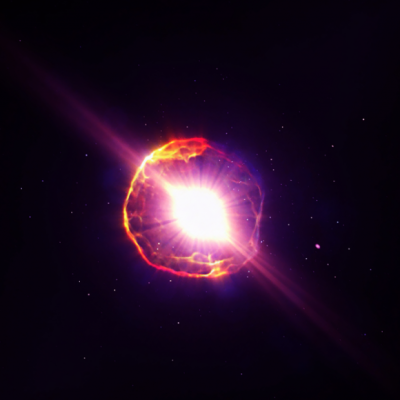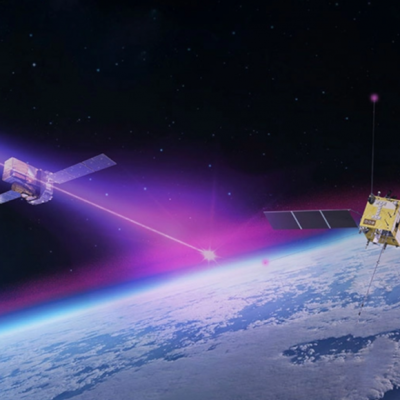The black hole at the center of the Milky Way galaxy recently lit up brightly, with the afterglow of Sagittarius A*’s last major activity still visible as a polarized X-ray echo. While Sagittarius A* is currently consuming very little matter and is much quieter than active galactic nuclei, astronomers had previously believed that its last major activity occurred around 3.5 million years ago. However, researchers from the National Center for Scientific Research (CNRS) have now discovered that the black hole was active again 200 years ago. They observed the surroundings of Sagittarius A* using the NASA X-ray polarimetry explorer (IXPE) and found different molecular clouds that reflect scattered X-rays. By analyzing the polarization of the X-ray echo, the researchers were able to determine that the reflected X-rays were likely caused by a radiation burst from Sagittarius A*.
The study reveals that the reflected X-rays from the gas clouds have a tilted vibration direction of -48 degrees and are about one-third polarized, which is consistent with the hypothesis that Sagittarius A* is the primary source of this radiation. The researchers were able to reconstruct that the radiation burst occurred about 200 years ago, making it likely that a burst of radiation from the supermassive black hole caused the X-ray echoes. The black hole emitted X-rays that were a million times brighter than its current level for about 1.5 years, which is comparable to the X-ray brightness of a Seyfert galaxy. Despite consuming less matter and emitting less radiation than other galactic nuclei like quasars, the study shows that the Milky Way was still a galaxy with an active core in astronomical terms.
This discovery provides a way to trace the past activity of Sagittarius A* over hundreds to thousands of years by using the X-ray reflection of gas in the center of the Milky Way. The study sheds light on the intense but short-lived flares that occur in the vicinity of Sagittarius A* and its nearby environment. The researchers’ findings provide a missing puzzle piece in understanding the origin of the intense X-ray light from these giant molecular clouds. By analyzing the polarization of the X-ray echo, the researchers were able to determine that the reflected X-rays were likely caused by a radiation burst from Sagittarius A*. This study highlights the importance of continued research into the activity of black holes and their impact on the surrounding environment.







-400x400.jpg)


